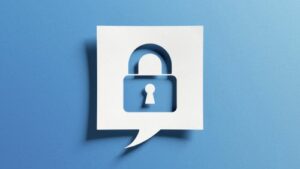Data Breach Notifications: A Practical Guide
Posted in Blog, Business to Business, Construction, Direct Sales, Education, Finance, Healthcare, IT Consulting, Non-Profit & Government Agencies, Professional Services, Small to Medium Sized Businesses
 It is crucial to stay one step ahead of potential threats. We recently received a Dark Web notification indicating a client’s email address may have been involved in data breach notifications. Understanding the facts and knowing how to respond is essential for minimizing risks. Let’s break down the key points and outline a proactive response plan.
It is crucial to stay one step ahead of potential threats. We recently received a Dark Web notification indicating a client’s email address may have been involved in data breach notifications. Understanding the facts and knowing how to respond is essential for minimizing risks. Let’s break down the key points and outline a proactive response plan.
Starting with the Facts:
Let’s establish a common understanding of the situation with the following facts:
- Data Breach Notifications: If you received data breach notifications, it means your email address was publicly listed in a data breach.
- Password Exposure: The breach may have included a password that matches your work password. Remember that we usually won’t have access to the clear text password.
- Risk Assessment: If your password does match, it represents an increased risk to your account. The actual level of risk may vary based on individual circumstances and controls set up on your network (MFA).
- Other Sensitive Details: The breach alert may contain other sensitive details that warrant further action, even if the password doesn’t match your work password.
How to Respond:
Responding to a data breach requires a thoughtful and careful approach. Here are recommended steps to consider:
Password Reset:
-
- As an IT admin, it is important to quickly reset their password if there’s any chance it matches the breached password.
-
- This approach places responsibility on the user and doesn’t require them to admit using the same password.
-
- If the alert includes the user’s password (plaintext or hashed), it can be tested with tools like L0phtcrack.
Risk Awareness:
-
- Inform the user that their account may be at a higher risk for spear-phishing or other social engineering attacks.
-
- Even if the password wasn’t exposed, leaked information can be a launching point for more sophisticated attacks.
-
- If the actual password was exposed, the user might be targeted in social engineering attacks to bypass MFA.
Additional Steps:
-
- Based on the breach details, take incident response steps if there is a chance of exposing sensitive information on third-party sites not sanctioned by IT (e.g., Dropbox, Google Drive).
Employees may consider personal steps with data breach notifications:
- Identity protection measures (e.g., credit monitoring, credit freezing, re-issuing credit cards) if PII or financial information was affected.
-
- They should change passwords for all other personal accounts that may have used variations of the same password (e.g., Personal Email, Banking).
Conclusion:
Facing a potential data breach is never easy, but a well-informed and proactive response can significantly reduce risks. By following these recommended steps, employees can take control of the situation, safeguard their accounts, and minimize the impact of a breach. Stay vigilant, stay informed, and let’s work together to strengthen our cybersecurity defenses. Contact Us if you would like to learn more about data breach notifications best practices.
Schedule a Call


